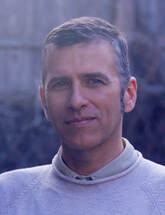Deathbed Revelations
A Review of All We Knew But Couldn’t Say
|
In All We Knew But Couldn’t Say, Emmy Award–winning actress Joanne Vannicola examines her painful relationship to her biggest fan and greatest tormentor: her sexually abusive, morbidly obese mother. The memoir flips back and forth in time from Vannicola’s tap-dancing childhood in 1970s Montreal to Toronto in 2002, where her mother lies dying from cancer. After nearly 15 years of estrangement, the reunited women must reckon with the constraints of their expected roles, different ideas about family and forgiveness, and previously undisclosed secrets. Vannicola writes, “The need to feel separate is so big, so old.”
Although the story follows a more or less linear, chronological timeline, the book’s division into four parts, each highlighting a formative influence of Vannicola’s identity—family, anorexia, lesbianism, and storytelling—is worth closer examination. Part One: “Walking Through Glass” shows Vannicola’s budding theatricality and the stage mother who encourages her—“Mother’s escape was the same as mine, only she experienced it vicariously through me”—as well as life in their chaotic home. Father is an Italian immigrant, a construction worker with a glass eye and “his Kodiak boots” who beats the girls (young Joanne and her older sisters, Sadie and Lou), but never their brother, Diego (who sometimes carries out the father’s beatings for him), at their mother’s bidding: “she wound him up like a music box.” It’s hard not to see the transference in one of Vannicola’s earliest memories: “My favourite kitten was smothered by her mother and lay dead beneath her. I couldn’t stop wailing. Sick of my screaming, my father went upstairs with a shovel and killed the remaining kittens.” After a particularly bad beating, Sadie speaks up at school and never returns home. Mother offers no explanation, only that “‘she said some things she shouldn’t have.’” Vannicola writes, “The only lesson I learned from Sadie’s absence was to keep my mouth shut, to never tell on my parents, even when I was the victim.” Vannicola excels at bringing a fresh, sharp immediacy to the story of her struggle with anorexia, and the insidious way the effects of trauma can take hold. At 8, Vannicola successfully auditions for Sesame Street. A few days later, she accidentally walks in on her mother in the bathroom: “Mother sat on the toilet with the door open, naked…She didn’t say anything, just stared at me. There was no toilet paper so she grabbed a towel...wiped herself with it, and widened her legs with her woman parts exposed, her eyes empty, like a dead person.” This is not the first time Vannicola remembers seeing her mother so exposed. One afternoon she walks past her in her bedroom “lying down, moving around and breathing heavily, naked. She lifted the top sheet from her body when she saw me staring at her through the open door…and caressed the side of the bed where my father usually slept, gestured for me… ‘Come lay down with Mommy, I’m lonely.’”
After her parents’ divorce, Vannicola’s father gradually drifts away. Vannicola writes, “I knew that both of my parents were disturbed; I just didn’t know how to speak that truth. Or who to speak it to.” Martha, her drama coach and the leader of a young people’s acting troupe, is not a candidate to become a confidante: she quickly becomes chummy with Vannicola’s mother. They coach her for an audition at Juilliard when she’s only 13. Vannicola makes it to the top five, but feels like her immaturity blows her interview. “I hadn’t realized how much I wanted it until it was over,” she writes. She takes solace in her budding relationship with a boyfriend, Clint, whom her mother begins flirting with and plying with beers. Brother Diego heads off to college; Mother kicks 18-year-old Lou out of the house and arranges for Joanne, at 14, to attend theatre school in Toronto. Vannicola is shocked by how carelessly she’s suddenly discarded, like the rest of her siblings, “falling off like a button from a shirt.” |
While Part Two: “Broken” focuses on Vannicola’s experience at a Toronto high school for the performing arts—“I could not read at the same level as the other students,” she says, and she doesn’t know how to take care of her basic needs—the emphasis is really on her developing coping mechanisms for trauma. “Nights were a nightmare. My flashbacks were becoming regular, and any loud sound might set me off,” Vannicola writes. She develops anorexia (“I pinched my belly … and cried because the skin felt like fat and I didn’t know the difference between the two anymore”), rebels at school, and tries to kill herself, first with pills, then by other means. “Though I wasn’t yet sixteen, I felt like an eighty-year old,” she writes. She props up a mirror next to her bed for company and feels reassured by her jutting bone structure: “The bones had been my friends at my lowest weight.”
“Navigating the world of lesbians could be tricky,” Vannicola writes in Part Three: “What I Knew.” “There were all these power dynamics to adjust to, like in any family or tribe,” Vannicola writes about her first important same-sex relationship with Carla, the director of her first important film, who “was old enough to be my mother.” The relationship is strained by “the power imbalance between us, the secret”—neither of them is out. Vannicola, at a high point in her career, then moves to California—pitched by her agent as “a cross between Angelina Jolie and Jodie Foster”—and completely freaks out. “I didn’t have the language for what I was experiencing—a reaction to homophobic undercurrents and extreme sexism, not just in the town, but also in the scripts.” Part Four: “The Stories Our Bodies Tell” expands fully into the book’s present day. Vannicola’s play-by-play description of her mother’s death, after the mother has unburdened herself of some pivotal family secrets, is some of the most powerful writing in the book: “She inhales deeply, like she is trying to breathe through a straw. She gasps, her eyes widen. She seems so engaged with someone or something above her bed. She nods as if in conversation, or in answer to a question. Yes.” All We Knew But Couldn’t Say conveys a wide range of the enormous complexity of human relationships, and a number of mysteries. They don’t all need to be solved, but they need to feel resolved within the book’s own harmonic structure. The disappearance (and later reappearance) of the sister, Sadie, and especially the agency of the acting teacher, Martha (whose motives for both helping and hurting young Joanne are never sufficiently unpacked) will likely leave readers frustrated. Vannicola’s breakthrough moment with a therapist, Alice, is greatly stripped of its power because their conversation rehashes scenes we’ve already witnessed for ourselves elsewhere in the book—the only one who’s in the dark about what happened is Alice. Vannicola’s strength, throughout, is in her scene-writing. All the scenes are vivid, well-drawn, and the (reimagined) dialogue rings true. Vannicola excels at bringing a fresh, sharp immediacy to the story of her struggle with anorexia, and the insidious way the effects of trauma can take hold: “The nagging voice inside my head was like a tripwire, sometimes sounding like my mother, words incessantly rotating in my head, like fat or Don’t cry or Do you love me?” Vannicola writes, “I held on to my secrets about my mother in feminist circles… No one talked about women who hurt women.” Many readers will be glad that Vannicola found the strength to speak up. By staying silent, who was she really protecting? As Vannicola realizes, “I had long been motherless. Her death made it finite.” 
REVIEWED BY MICHAEL QUINN
Michael Quinn interviews authors and reviews books for Publishers Weekly, for the Adroit Journal, and for his own website, under the heading “Book Report.” His reading list for the reviews he’s not assigned is determined by interest, whim, and chance—and by what’s available at the Brooklyn Public Library. |
